Jamaica’s Endemic Birds Part 5
These final six endemic species of Jamaica fall at the end of the taxonomic order of birds (as listed by the American Ornithologists’ Union) and all but the last are part of the group known as the “nine-primaried oscines.”
At one time they were even placed in the single giant family Emberizidae, but current practice has them split into five families – though even that arrangement is in flux.
The Arrowhead Warbler – named for the arrowhead-shaped markings over its entire body – is definitely a parulid, so no question about its familial relationships. It has a distinctive foraging behavior, hopping along branches, pumping its tail, and peering underneath leaves and twigs for food. It doesn’t seem to flit, dart, or hover like a typical hyperactive warbler. Thanks to Brennan Mulrooney for this difficult-to-photograph species.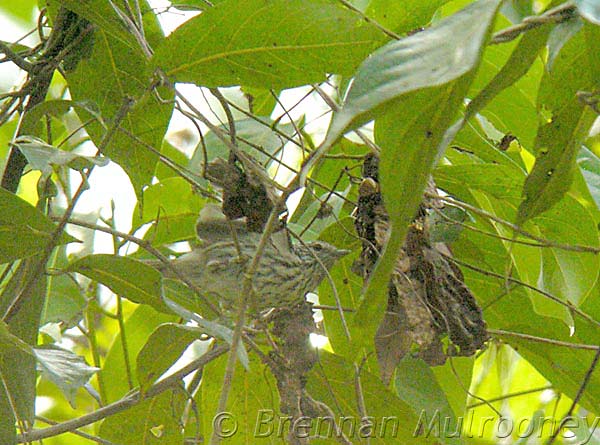
Here’s another photo of the constantly moving, dark-forest-inhabiting Arrowhead Warbler, by David Irving. It used to be called Arrow-headed Warbler, by the way, and the AOU changed it not-too long ago. If “spot-breasted” means having spots on the breast, then “arrow-headed” would mean having arrows on the head, which this bird does not have. It has arrowheads all over.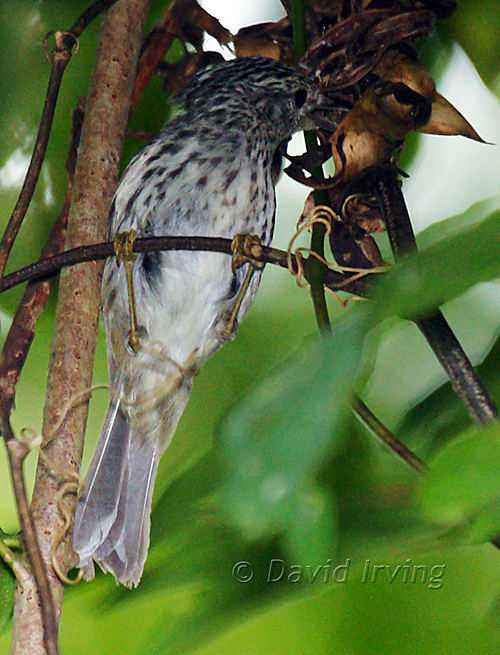
Another unquestioned familial relationship is held by the Jamaican Spindalis, a recent split from what used to be called the Striped-headed Tanager. Compared to the others, this one is a giant, and the plumage of the female is only a little duller than that of the male. In the other species, the female is much drabber.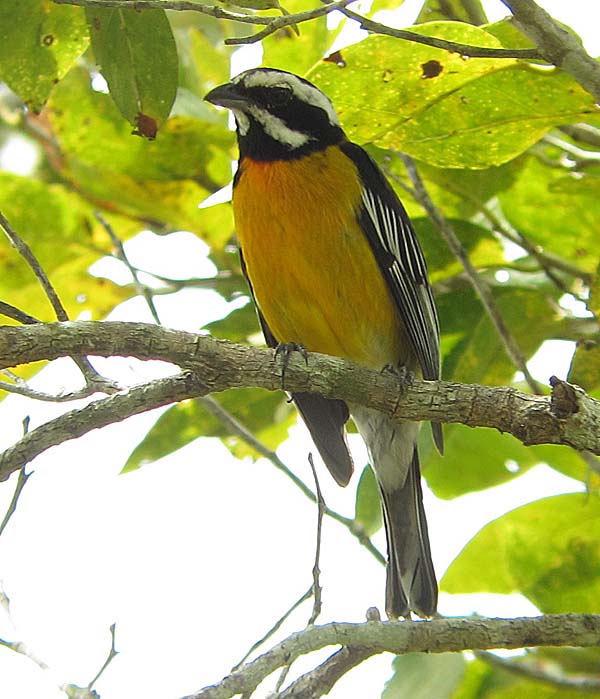
With the Yellow-shouldered Grassquit we start to get into the confusing relationships. Shaped like a number of other emberizids such as seedeaters and sparrows, this endemic has been long recognized as belonging to a distinct grouping noted, for one, for the dome-shaped nests made by all species. Sooty and Yellow-faced Grassquit are two familiar mainland species that belong to this group, but nearly all others are island inhabitants. Another unifying characteristic of this family that I’ve not seen mentioned anywhere is the highly modulated notes of the songs, being more of a blurry, atonal hiss to our ear, rather than the sweet, melodic whistles of typical emberizids. Not surprisingly, genetic studies have now confirmed that this whole grouping is actually nestled within the tanager family Thraupidae, in general a group of songbirds with simple, high-pitched calls and songs. And now that we know that bill size and shape can evolve virtually overnight, it’s no longer a challenge to disregard these features used by early ornithologists to place this group within emberizidae and look at more meaningful (i.e. slow-to-evolve) characteristics such as voice, nest-building behavior, and internal morphology.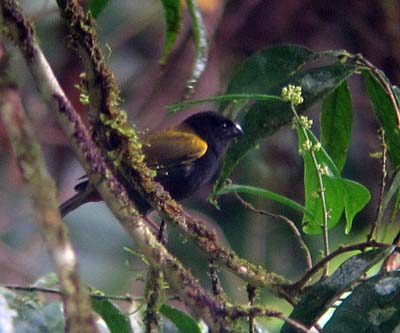
The Orangequit is a true oddball among Jamaican endemics. It’s distinctive enough to have been placed in its own genus (Euneornis), and you’d be hard pressed to come up with any bird as an obvious closest relative. There just isn’t any. But genetics has shown this to also belong in the “dome-nest builders” clade of finch-like tanagers, including all those other Caribbean grassquits, bullfinches, probably the Bananaquit, as well as all the Galapagos finches and a few mainland oddities such as Peg-billed Finch. “Quit,” incidentally apparently comes from an African word for “little bird,” and describes this species’ penchant for eating oranges, not for the rusty-orange spot on the throat.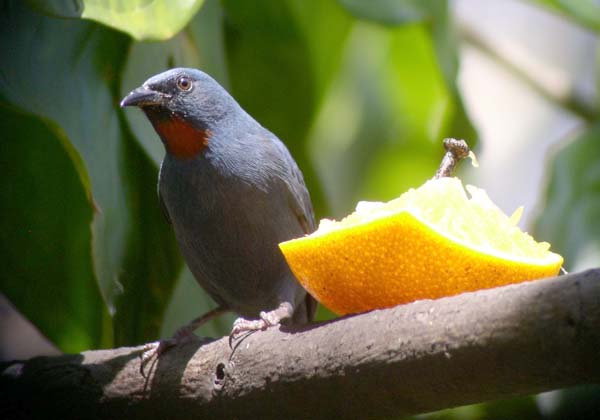
The Jamaican Blackbird is an oddball among icterids. It has been surmised that its closest mainland relative is the Solitary Black Cacique, but in voice, habitat, and behavior there are few resemblances. This bird fills the niche of mainland foliage-gleaners or tuftedcheeks, rummaging around in bromeliads and vine tangles up high in trees. That plus the fact that both members sing in a short duet suggests that perhaps Yellow-billed Cacique might be a better bet. This is one of the scarcer endemics, being restricted to taller, wetter forest where there is an abundance of their epiphyte foraging substrate.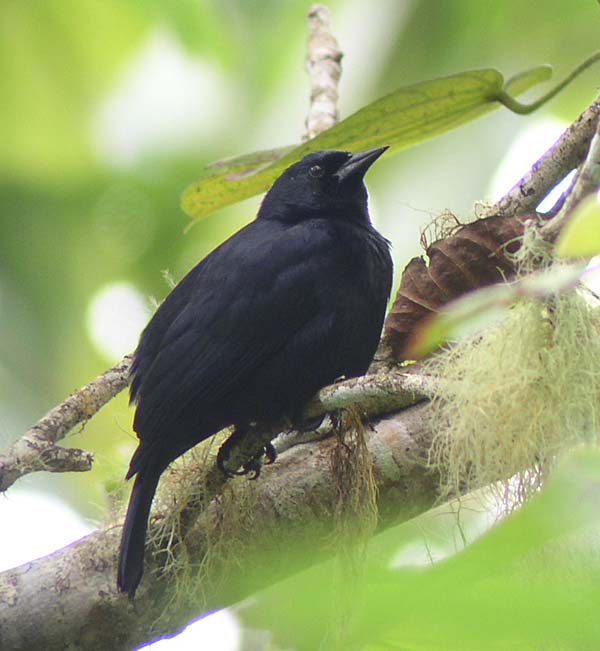
The final endemic in this list is the Jamaican Euphonia. Once thought to be tanagers, euphonias are now recognized as being close relatives of the siskin and goldfinch group of true finches. A typical euphonia in most respects, its dull, gray plumage may be enough to demonstrate that the Plumbeous Euphonia of northern South America is the closest relative. Common island-wide, this endemic is likely to be found in any clump of fruiting mistletoe.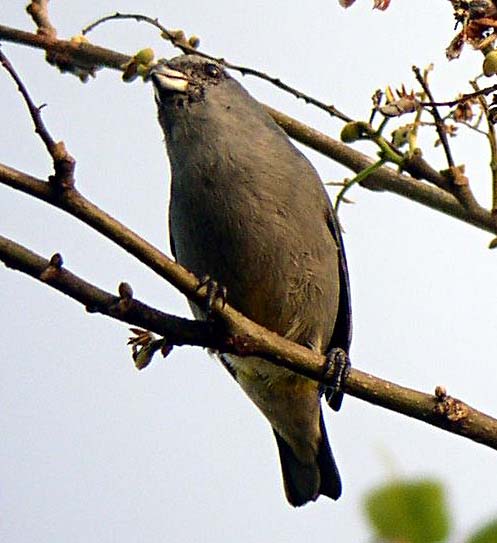
So far, these are the 27 AOU-recognized endemics, plus another form of the Streamertail, adding an obvious 28th species to the list. Next I’ll show some of the subspecies found only on Jamaica that may very well be distinct species.

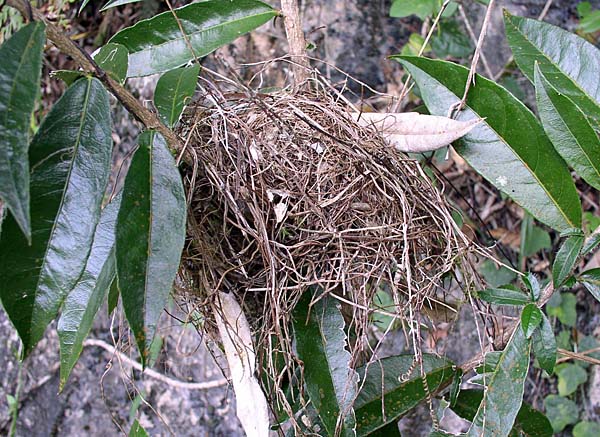
The gray one looks really lovely. I love their colors.